Horsetail Creek, in the Columbia River Gorge, was historically a dynamic part of the Columbia River floodplain, with intact ash forest and scrub-shrub wetland vegetation habitat, and five creeks and sloughs connecting to the river that provided important habitat for salmon, steelhead and lamprey. Today, quality floodplain habitat is scarce for out-migrating salmon, and this important floodplain provides one of the last spots for these fish to rest and feed before traveling through the Portland-Vancouver Metro area where such habitat is severely limited.
The project happened over two phases. Find more about Phase 2 here. You can also view a 2021 storymap with details on Phase 1 and what we have learned from that work.
Phase 1
In 2013, the Estuary Partnership worked with the US Forest Service and other partners and contractors to restore connectivity and 180 acres of habitat at the site.
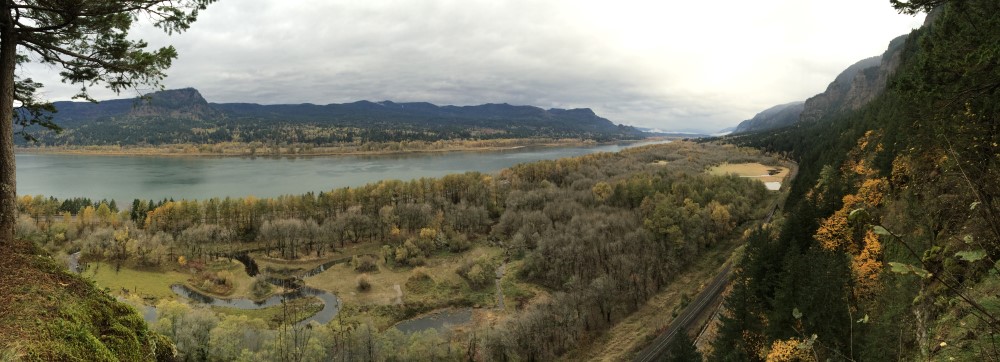
The site had several issues. The construction of Interstate 84 cut the floodplain off from the mainstem Columbia River, and habitat was further degraded when people cleared the land to graze cattle. Though there was a culvert under the interstate, it was too small and only accessible by fish when the Columbia River was high. Fish could also be stranded when river levels receded. Moreover, when the highway was constructed, there was a gravel pit left behind that nearby Oneonta Creek had diverted through before it flowed into Horsetail Creek. This stagnant water raised temperatures throughout the site.
Through the project, we worked with crews from Aquatic Contracting to retrofit the culvert that passes under I-84 to make it easier for salmon and lamprey to access the site. We also eliminated the diversion of Oneonta Creek and converted the former gravel pond to native wetland habitat. Crews from Ash Creek Forest Management also removed invasive plant species and revegetated the area with native trees and shrubs. Helicopters placed 600 large logs and root wads in the streams and wetlands. Engineering designs and construction oversight were completed by Inter-Fluve.
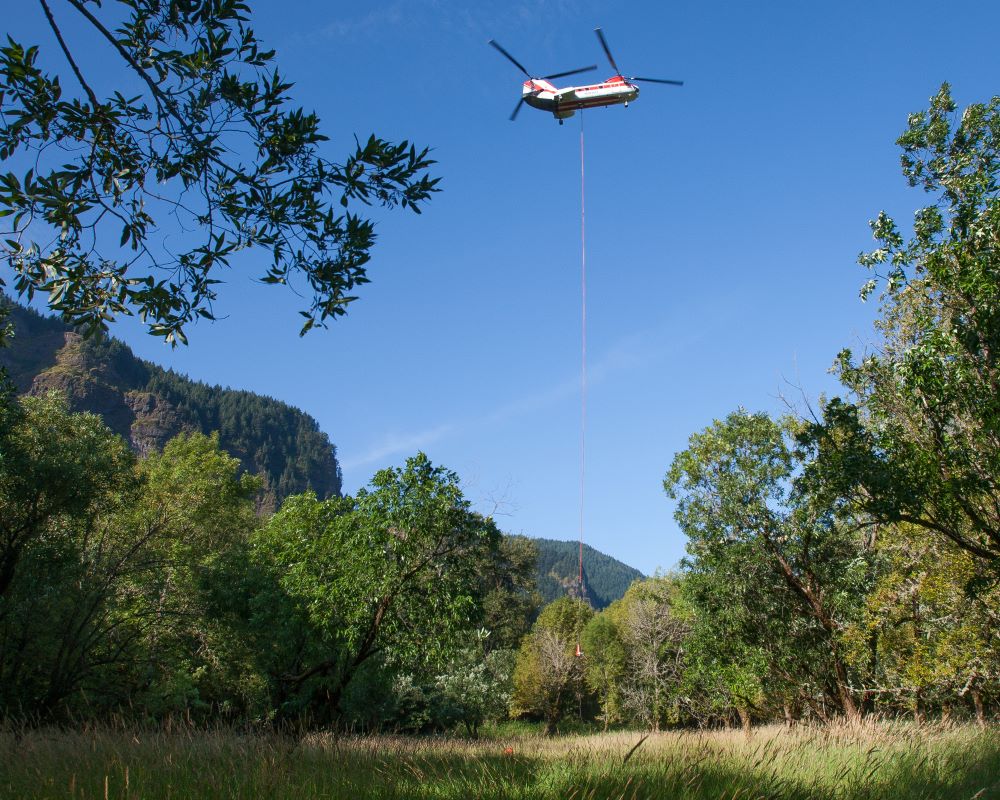
Many species have been observed at the site, including coho, steelhead, and Chinook (including stocks from eastern Oregon, Washington, and Idaho), red-legged frogs, great blue heron, and other wildlife.
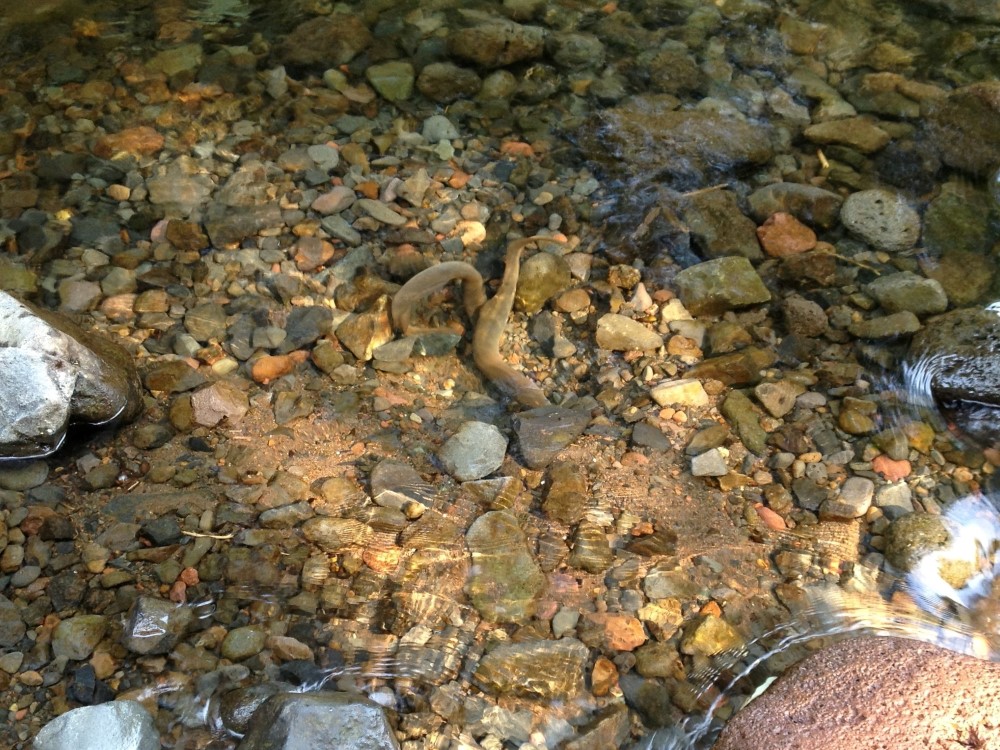
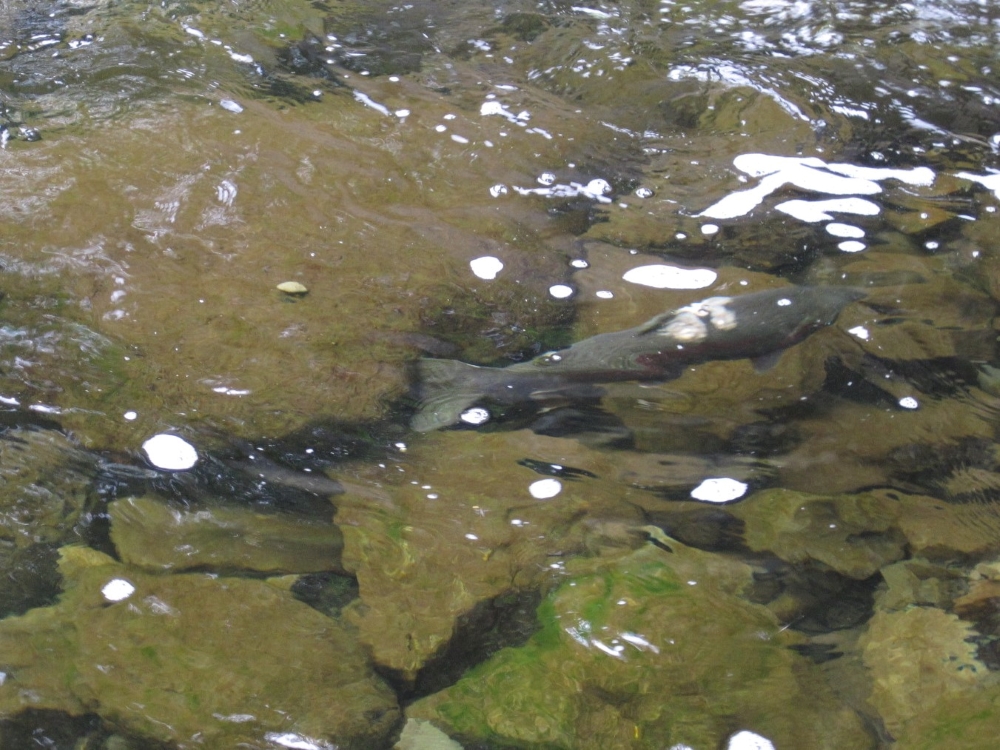
Phase 1 Project Videos:
This 2021 video shares more about what the Phase 1 project accomplished, and complements the 2021 storymap about the project.
Thanks for Sara Fox for developing a video for the project when it was constructed in 2013.
Horsetail Creek Restoration 1 from Sarah Fox on Vimeo.
Phase 2
In 2017, the Estuary Partnership and the US Forest Service began scoping for a second phase of floodplain restoration at this site, to the east of the first phase's project area. Later that year, the Eagle Creek Fire burned through the Columbia River Gorge, impacting around 16 acres at this site, making revegetation efforts even more critical.
In spring 2020, the Estuary Partnership worked with the US Forest Service to fell trees - many that had been burned in the Eagle Creek Fire - into the Horsetail floodplain to add habitat complexity.
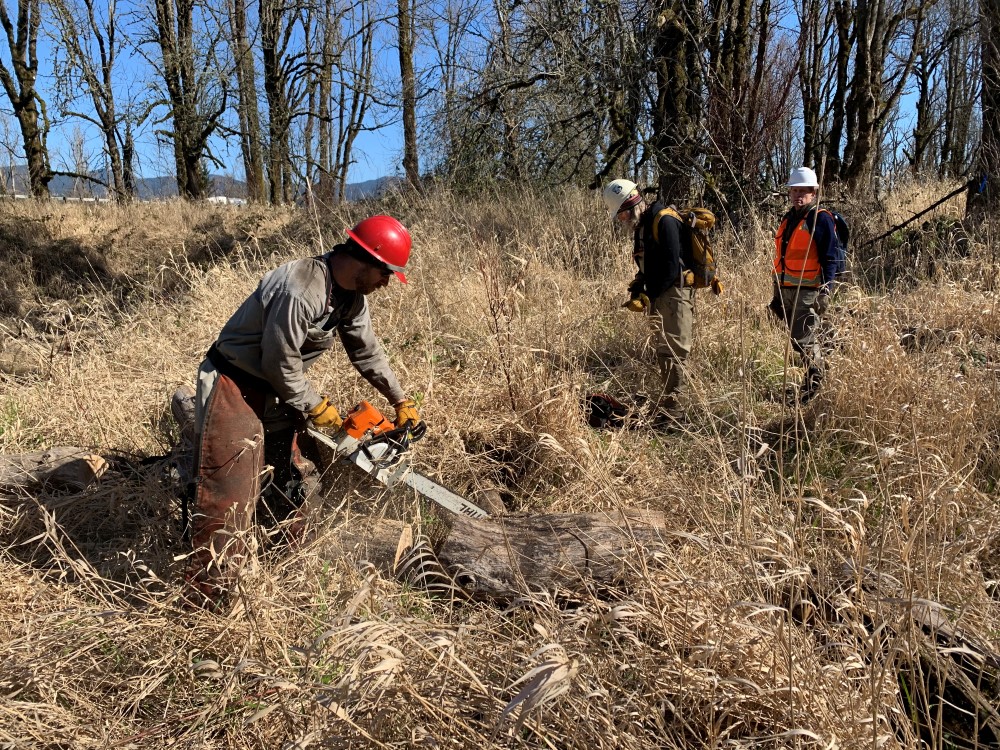
We also began treatments across 31 acres of the site for invasive plants before replanting with native species. Between 2020-2024, crews from Ash Creek Forest Management planted 92,000 native bare-root plants and stakes. Transitioning the site from invasive reed canarygrass to a native diverse floodplain forest improves riparian habitat, provides cover for fish using the streams, and protects stream temperatures from becoming too warm.
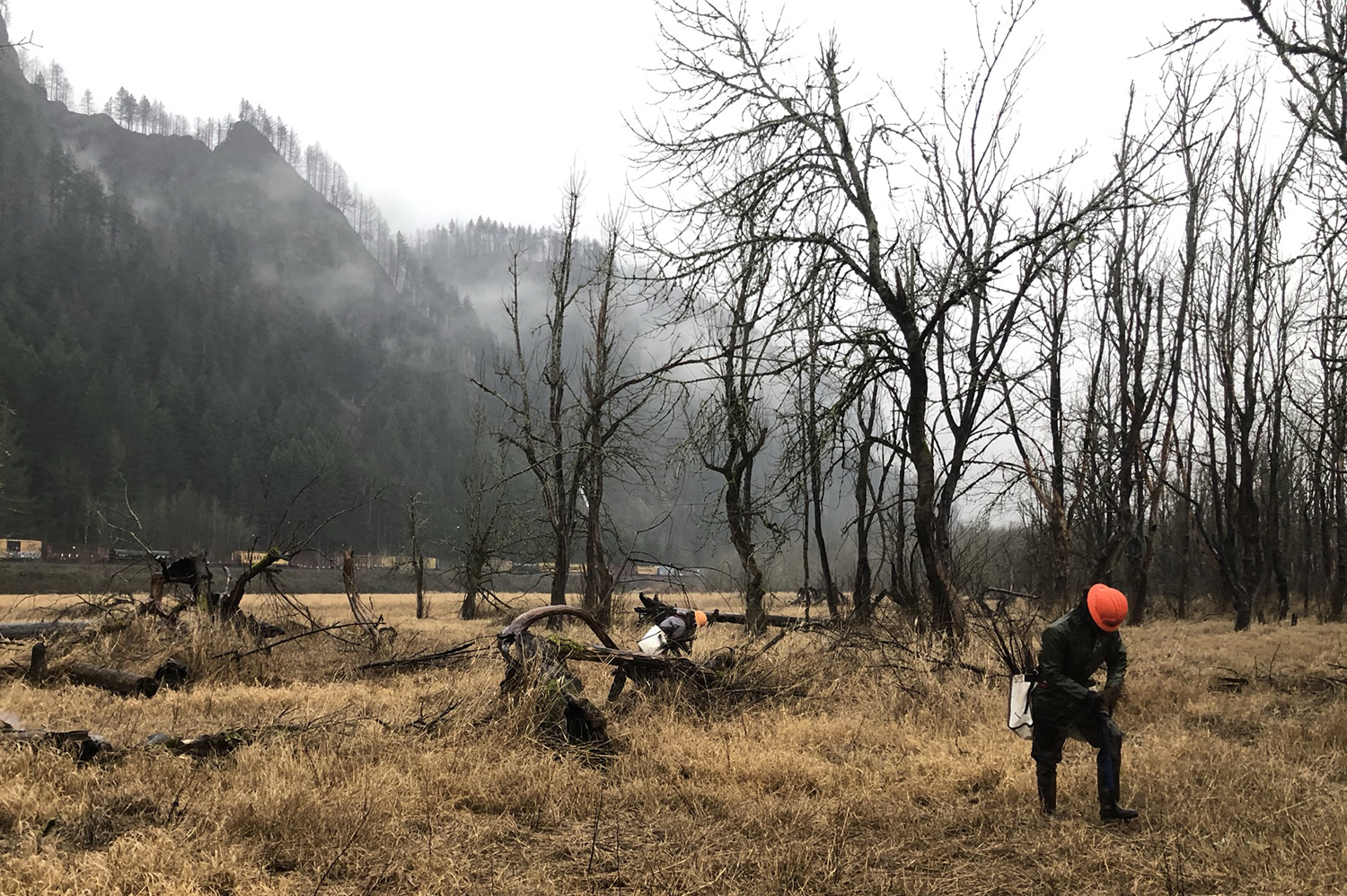
In 2024, we teamed up with the U.S. Forest Service Columbia River Gorge National Scenic Area to install two beaver dam analog (BDA) structures in the restored floodplain. BDAs are human-made structures built with natural materials like willow and cottonwood poles that improve conditions for fish and wildlife. These structures mimic beaver-made dams and provide a range of ecological benefits at the site. In the spring, when floodplain inundation is high, BDA structures will enhance channel complexity, benefiting juvenile salmon rearing and refugia habitats. In the summer, BDAs can help maintain cool thermal conditions for salmon by directing the cool water from Horsetail Creek to flow directly into the Columbia River, rather than heating up in the backwater slough. While the BDAs are temporary, they can be “adopted” by beavers, who will make these dams their own.
The BDAs were the final action in Phase II to further enhance habitat complexity and diversity, continue to reduce stream temperature impacts, and restore riparian and floodplain vegetation across the site.
-
Actual Miles Restored
1.00
-
Reach
H
-
Start Year
2010
-
End Year
2024
-
Total Acres
96
-
Type
Habitat